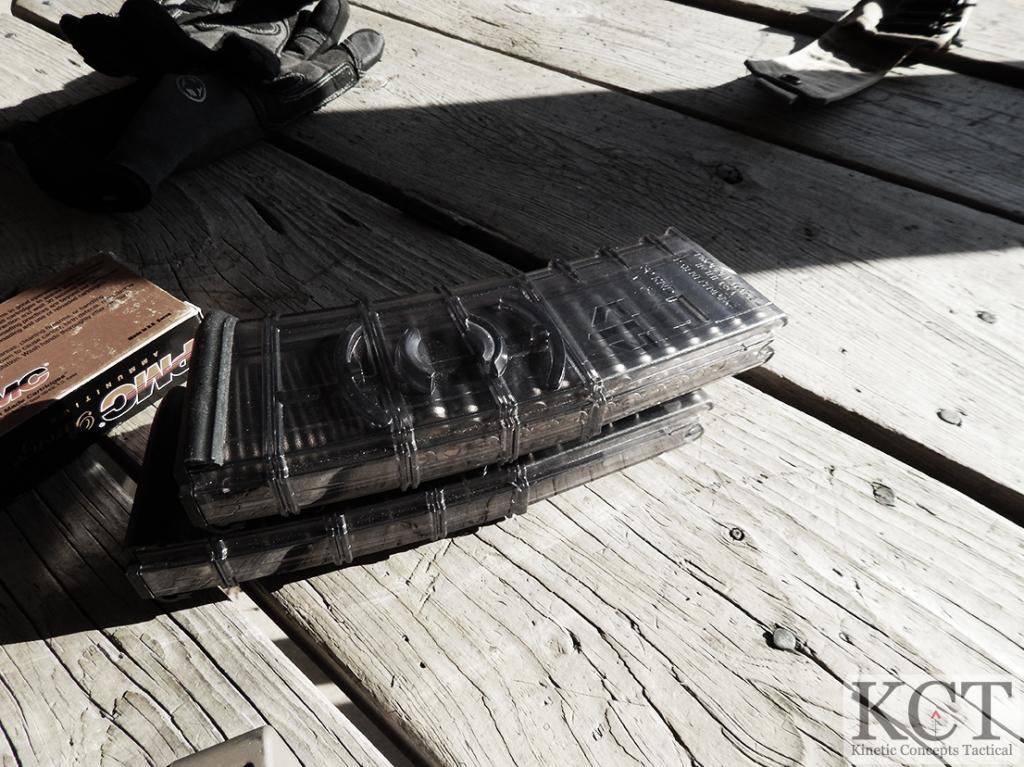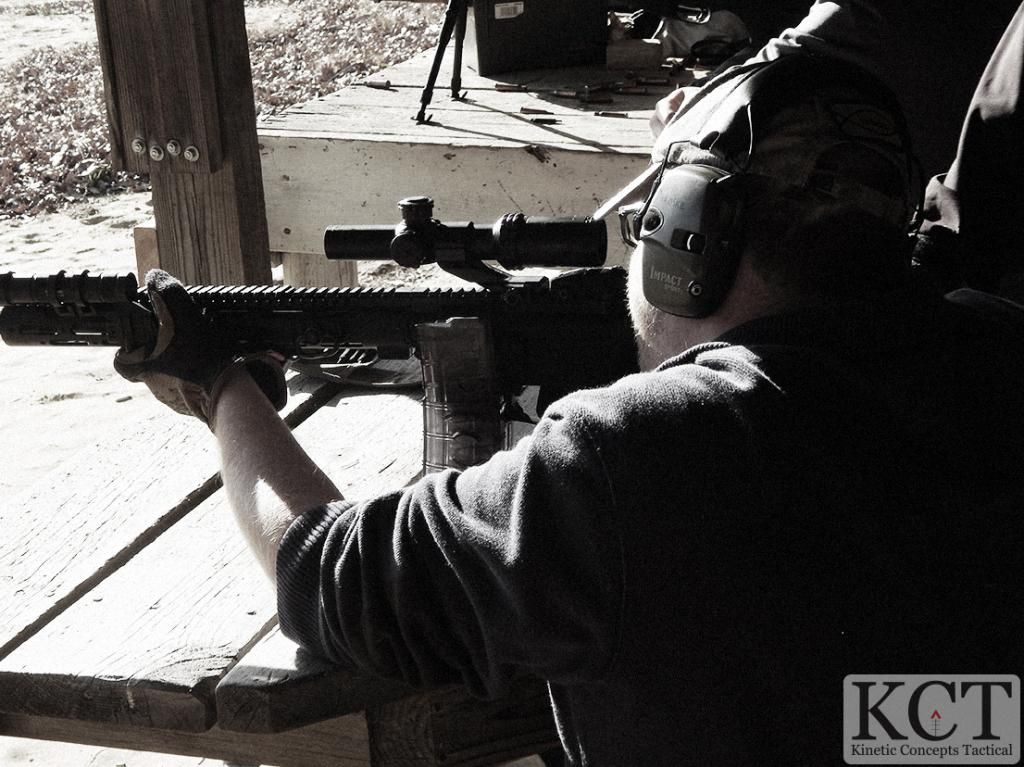When I first got into shooting, there were quite a few things that I wanted. After looking into those things and their prices, my want list transferred over to the "not going to happen" pile.
The first rifle I ever really fell in love with was the H&K G36. I had airsoft replicas of it. I pored over books and magazines, reading about how awesome and unobtainable this gun was. I thrilled to see it in the movies. It was sleek, deadly, futuristic, and oh so sexy to me.
One of the big draws for me was the clear magazines. I marveled at this feat of German engineering. You could see how much ammo you had left, and you could clip them together? If it got any better than that, I didn't want to hear about it.
Import laws and price tags being what they are, I finally left the dream of a G36 behind, and got in with everyone else with the AR platform. I still dig clear mags, in fact some of my first magazine purchases were Pmag Maglevels and clear Lancer L5's.
Shortly after last Shot Show, I saw some of the new magazines Elite Tactical Systems was releasing. I saw the live rounds in the clear, coupled mags, and I was sold. However, the products needed to live up to the expectation, and so I contacted ETS to get some for review. ETS was kind enough to send me two mags with the couplers and one of their stand-alone mags.
Thoughts on Use
Before I dive into the review, let me go over some of my philosophies regarding magazines and ammo. First off, for a defensive rifle, more ammo is always better, within reason. A C-Mag or Surefire 100-rounder is off the table for me due to reliability concerns and the fact that they are bulky.
Ready-mags don't appeal to me due to the modified manual of arms they present, and the fact that they may not work with some of the equipment I may have on my rifle. Additionally, if you don't have a magazine in the Ready-mag, it becomes added weight and clutter to your gun with no additional benefit. The Ready-mag is something that you need to train to before you start unlocking the benefits of the system. I'm not saying it's a bad system, just one that has pros and cons, and you need to think about those before adopting any system.
I was having a discussion with one of my trainers about the shoothouse scenarios they run, which is in the context of a home invasion where you grab your preferred weapon and work through the house. He put it in realistic terms: "What do you sleep in? If you reload your rifle in the house, where did that reload come from? " And that's a great point.
Prior to this, I've taken to loading my biggest magazines and coupled magazines on my home defense rifles. I figure if I can only pick up my rifle in time to deal with something, I'd better be able to have enough ammo to address a variable number of threats.
The ETS magazines take this a step further. With their coupled mags, I get the benefits of a clear magazine so I can check ammo type and levels at a glance, and I don't need to add any extra equipment to link them together.
Design
Both the coupled and standard versions of the magazines share the same robust body. The ridges on the magazines aid in grip when extracting them from pouches and inserting them into the gun. The ridges are much more pronounced than the Gen2/M3 Pmags, and slightly less aggressive than the H&K magazine.
The magazines come with a pop-off dust cover similar to the Magpul offerings, but like the M3 Pmag, it does not attach to the baseplate. The magazines have stripper clip guides for those who use them.
The magazine features a constant-curve body and a true anti-tilt follower. The follower and the feeding of ammunition is among the smoothest I have seen due to the smooth polymer ETS uses for the body of the magazines. The spring is captured by the follower to ensure consistent feeding and to avoid parts loss.
The baseplate is secured by the lock plate which aligns the spring inside the magazine. The lock plate features a raised section in the outline of a round, which fits into a slot on the baseplate, locking it into place. Disassembling the mag is very simple, as the lock plate can be pushed in with a finger, spare round, or other small tool to release the baseplate. The lock plate, spring and follower can then be removed from the bottom of the magazine.
The standard magazine is pretty much what you would expect. The coupler versions have a circular lock on either side that interfaces with the opposite side of the next magazine. The mags are pressed together at this point at a 90-degree angle, and then rotated into alignment. This engages the lock. The lock is stabilized by tabs placed around the outside of the lock. When separating the magazines, you simple squeeze them together at the top of the mags, which causes the tabs to unlock, and when rotated another 90-degrees, the mags release from each other and can be used independently if desired.
The locking and unlocking action of the magazines is very smooth, and there are no large protruding tabs to snap off like the G36 and SIG mag designs. So far this system has had no malfunctions and works like it should.
Range Time
We took these out for several range sessions, and ran about 500 rounds through the three of them we were sent for testing (two coupled models and one single). The mags functioned flawlessly. They survived drops onto rocky ground and concrete both loaded and empty with only minor scratches. I know that clear or translucent polymers have tended to be brittle or prone to cracking. ETS has come up with a solid design with a good amount of structural reinforcement that keeps these magazines running strong.
The standard version of their magazine works like any other mag. If you're in the market for a clear magazine that disassembles easily, looks good, and works flawlessly, this is a great choice.
For me, however, being able to link two (or more) clear polymer mags together is just the ticket. Just like anything, reloading the coupled quickly magazines takes a fair bit of practice. There were a few times where my rifle would go dry and my muscle memory would send my hand back to the mag carriers on my belt instead of the spare magazine on my gun. Working though issues like that reminded me of the importance of training on any system you want to use, no matter how simple it seems. Having a second magazine on the side of your gun also means that your access to some of the controls may be restricted. The test AR's all have BAD Levers, which were not impeded by the ETS magazines. I then tested them in a Kel-Tec SU-16, which had no issues with the charging handle being able to clear the magazines.
One of the main benefits of this system, however, is simply having that extra magazine on the gun without resorting to a Redi-Mag or buying a magazine coupler. For a trunk gun or a bug out rifle, being able to carry a spare mag without needing extra load bearing gear can be critical. Popping the dust covers on the magazines and throwing them in your go bag gives you a nice compact source of ammo that easily separates to feed two rifles, something you can't do with most couplers or a Redi-Mag.
Elite Tactical systems seems to have a hit on their hands. To learn more, or to purchase, take a jump over to their page.
Stay accurate.
Kinetic Concepts Tactical






No comments:
Post a Comment